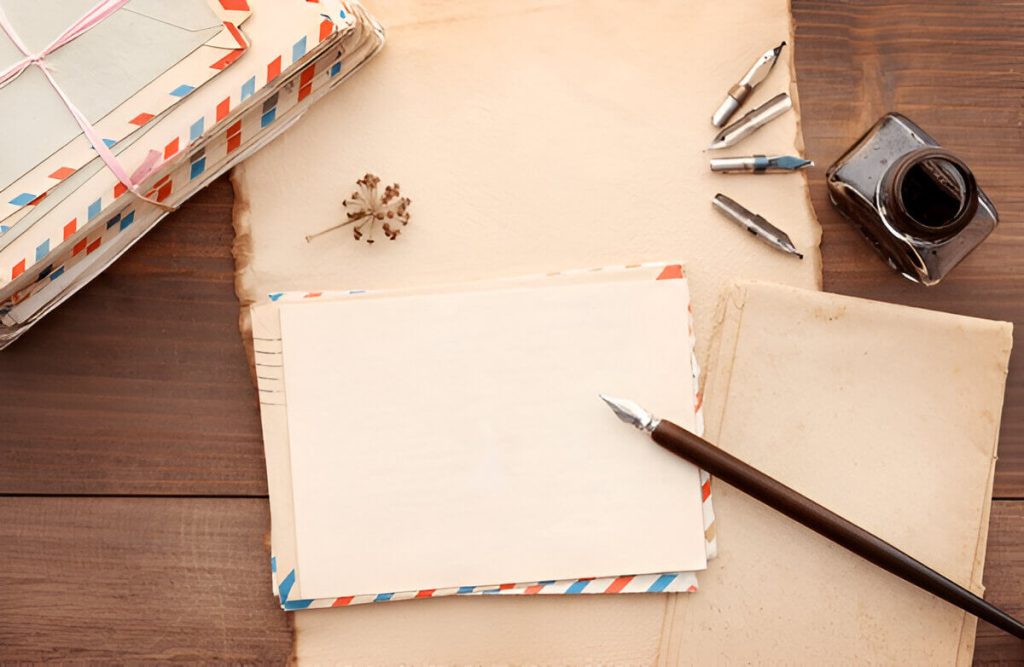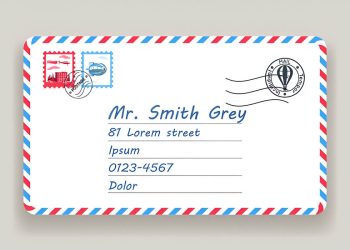Mailing a letter may seem simple, but beginners can find the postal system daunting. This guide simplifies the process into easy steps: gathering materials, addressing an envelope, selecting postage, and choosing mailing methods. It also offers solutions to common issues. Whether it’s your first letter or you need a refresher, this guide ensures your correspondence reaches its destination efficiently.
Understanding the Basics of Mailing a Letter
Mailing a letter might seem like a straightforward task, but understanding the nuances of the mailing process can ensure your correspondence reaches its destination without any hitches. To begin with, knowing how to mail a letter involves selecting the right size and type of envelope for your content. Once you’ve chosen an appropriate envelope, addressing it clearly is crucial. Include the recipient’s full name and address in the center and your return address in the top left corner.
Next comes affixing postage. The amount required depends on factors such as weight, size, and destination, whether domestic or international. Familiarizing yourself with postal service basics ensures you select adequate postage to avoid delays or returns.
The actual sending of a letter involves placing it in a mailbox or taking it to your local post office. Understanding how mail works also includes recognizing that letters are sorted at distribution centers before being dispatched to their final destinations.
By grasping these fundamentals of mailing a letter, you can navigate the postal system with ease and confidence, ensuring that your message is delivered promptly and securely.
The Essential Materials You Need to Mail a Letter
Mailing a letter may seem like a simple task, but ensuring it reaches its destination successfully requires a few essential materials. First and foremost, you’ll need an envelope. Envelopes come in various sizes and styles, so choose one that fits your letter comfortably without folding it excessively. Next, don’t forget the postage stamp. The type of stamp you need depends on the weight of your letter and its destination; domestic mail requires different postage than international mail.
An address label is another crucial component. Clearly write or print both the recipient’s address and your return address to ensure proper delivery and return in case of any issues. Writing materials for letters are also important, whether you prefer pen and paper or typed correspondence, make sure your message is clear and legible.
Having an assortment of mailing supplies on hand can be helpful for different mailing needs. This might include additional envelopes, stamps of varying denominations, labels for addressing multiple recipients efficiently, or even decorative elements to personalize your letters.
Step-by-Step Instructions on Preparing Your Letter for Mailing

Preparing your letter for mailing might seem straightforward, but ensuring it reaches its destination without a hitch requires attention to detail. Here’s a step-by-step guide to help you through the process:
- Addressing an Envelope Correctly: Begin by writing the recipient’s address in the center of the envelope. Use clear and legible handwriting or print it out if possible. The address should include the recipient’s name, street address, city, state, and ZIP code. Double-check for accuracy to avoid any delivery mishaps.
- Writing the Recipient’s Address: When writing the recipient’s address, start with their name on the first line. Follow this with their street address on the second line, ensuring you include any apartment or suite numbers if applicable. On the third line, write out their city followed by a comma and then their state abbreviation with a space before adding their ZIP code.
- Return Address Format: Your return address should be placed in the top left corner of your envelope or on the back flap if preferred aesthetically or culturally appropriate. This includes your full name on one line followed by your street address on another and finally your city, state abbreviation, and ZIP code on subsequent lines.
- How to Fold and Insert a Letter into an Envelope: If you’re dealing with standard letter-size paper (8 ½ x 11 inches), fold it into thirds to fit most envelopes comfortably without creating unnecessary bulk that could lead to tearing during handling. First fold one-third of the paper up towards the middle before folding down from above so that all edges align neatly when inserted into an envelope.
By following these steps meticulously (addressing envelopes correctly with accurate information and folding letters appropriately ) you ensure that your correspondence is handled smoothly by postal services en route to its intended recipient.
Selecting the Right Postage and Where to Get It
Understanding how to select the right postage for your letters is essential to ensure timely and efficient delivery. The first step in this process is determining the current postage rates for letters, which can vary based on weight, size, and destination. For a standard letter within the United States, a Forever Stamp usually suffices, covering up to one ounce. However, if your letter exceeds this weight or has non-standard dimensions, additional postage will be required.
To answer the question “How much postage do I need for a letter?” you can use online postal calculators provided by postal services. These tools allow you to input details about your mailpiece and receive an accurate estimate of the required postage.
When it comes to purchasing stamps, there are convenient options available. You can buy stamps online through official postal service websites or authorized retailers. This option allows you to order from the comfort of your home and have them delivered directly to you. Alternatively, if you prefer an in-person experience or need assistance with specific mailing needs, visiting your local post office remains a reliable choice.
By staying informed about current postage rates and utilizing both online and offline resources for buying stamps, you can ensure that all your mailing needs are met efficiently and accurately.
The Different Methods of Mailing Your Letter
When it comes to mailing a letter, there are several convenient methods available to ensure your correspondence reaches its destination securely and efficiently. Understanding these options can help you choose the best method based on your needs.
One of the most straightforward ways is using mailbox drop-off locations near me. These are strategically placed throughout neighborhoods and cities, providing easy access for sending mail without needing to visit a post office. To use these postal drop boxes safely, ensure that your envelope is properly sealed and addressed. It’s also wise to check collection times posted on the box to know when your letter will be picked up.
For those who prefer or need additional services, visiting a post office might be more suitable. Here, you can access a wide range of post office services explained by knowledgeable staff members. From purchasing postage stamps and sending packages via different classes of mail to obtaining tracking information or using certified mail for important documents, post offices offer comprehensive solutions for all mailing needs.
Each method has its advantages, drop boxes provide convenience and speed, while post offices offer full-service support for more complex mailing tasks. By understanding these options, you can make informed decisions about how best to send your letters securely and efficiently.
Troubleshooting Common Issues When Mailing Letters
When it comes to mailing letters, encountering issues can be frustrating, but understanding common problems and their solutions can help streamline the process. One frequent issue is lost mail, which can occur due to various reasons such as incorrect addressing or mishandling during transit. To mitigate this risk, always double-check the recipient’s address for accuracy and consider using tracking services for important mail.
Incorrect postage is another common problem that can lead to delays or returned letters. It’s crucial to ensure that your letter has sufficient postage based on its weight and destination. If you’re unsure about the required postage, consult with your local postal service or use online calculators available on their websites.
Letters marked as “undeliverable as addressed” often result from incomplete or incorrect addresses. To avoid this mistake, verify all details before sending out your mail. Including a return address is also a good practice; it allows undelivered letters to be returned to you rather than being lost in the system.
Enjoy the Timeless Practice of Sending Personal Correspondence through the Mail!
In an age where digital communication dominates, the timeless practice of sending personal correspondence through the mail offers a refreshing and meaningful alternative. Writing a letter or sending a card allows for a more personal touch, as each piece is crafted with care and intention. Unlike emails or text messages that can be quickly typed and sent, physical mail requires thoughtfulness in choosing the right words, selecting stationery, and sometimes even adding a personal signature or doodle.
The joy of receiving mail is unmatched; it brings an element of surprise and anticipation that digital messages often lack. Opening a letter or card creates an intimate moment between the sender and recipient, fostering deeper connections. Moreover, these tangible pieces serve as lasting keepsakes that can be cherished over time.
Engaging in this practice also encourages us to slow down in our fast-paced world. It provides an opportunity to reflect on our thoughts and emotions before expressing them on paper. This mindfulness not only enhances our writing skills but also enriches our relationships.
Whether it’s for birthdays, holidays, or just because, taking the time to send personal correspondence through the mail allows us to express gratitude, share stories, and connect with others in a heartfelt way. So why not embrace this delightful tradition? Enjoy the process of creating something meaningful with your own hands, it’s an experience both you and your recipients will treasure.




